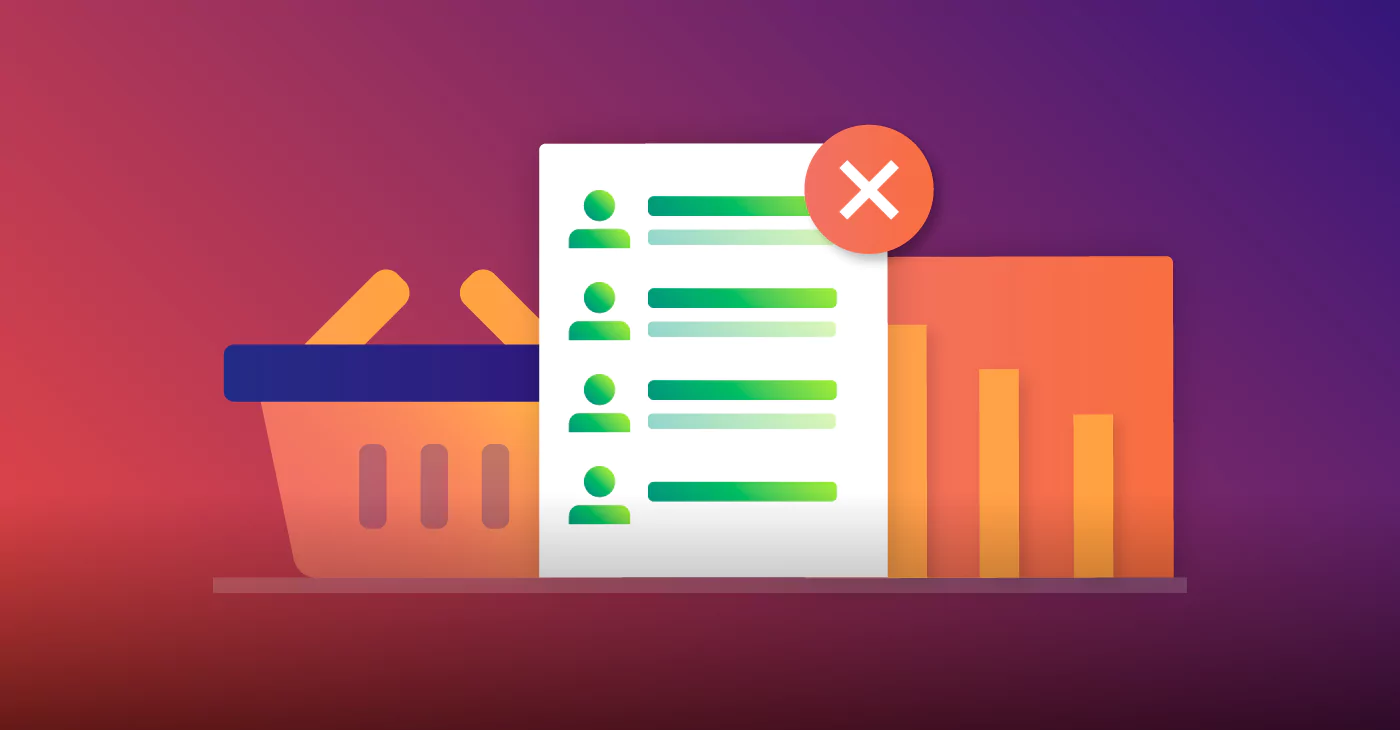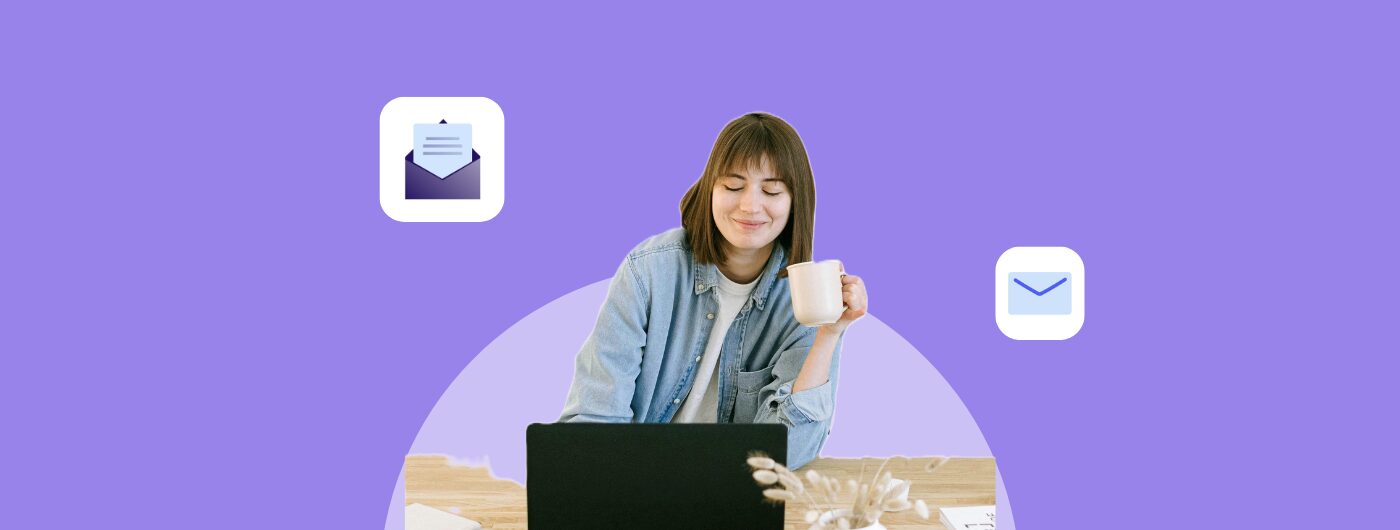Why Building is Better than Buying When it Comes to Email Lists
September 26, 2023 12 min read

Shortcuts are efficient, and as the name implies, they get you to where you need to go in a shorter amount of time. But not all shortcuts are good. In fact, some shortcuts are just plain lazy and can result in a heap of trouble.
Take, for instance, your email marketing. You’ve got some great content, but all you need are people to email it to. As a busy professional, it can be tempting to take the route that will get you the most contacts as quickly as possible. But buying email lists can actually cause your business more harm than good. It’s a shortcut you just don’t want to take.
Let’s take a look at a few of the reasons why you should steer clear of this practice and some legitimate ways to build a solid, lucrative email list on your own.
What are Bought Email Lists?
Bought email lists are collections of information purchased from a third-party company that promises to give you thousands of “qualified” contacts at the time of purchase. Bought lists may seem like the easy answer to a complex problem, but the truth is that shortcuts almost never work, and bought lists can cause way more problems than they solve.
How and Why do People Buy Email Lists?
People buy lists from list providers that promise huge numbers of contacts in exchange for money. These businesses sell the contact information of hundreds of thousands of people in packages ranging from a few thousand all the way to hundreds of thousands, even over a million.
Depending on how they acquired this information — sometimes they’ll have partners who share their subscribers’ information, and sometimes they use sophisticated search engines to compile long lists of corporate email addresses and other publicly available information.
Either way, they promise customers email lists that come preloaded with qualified contacts, segmented by demographic or psychographic information. It can be tempting to buy a list, especially when you’re just starting out — after all, who can resist adding 50 or 100 thousand contacts to their list, in the exact demographics or industries they need to target, in just a matter of minutes?
But trust us: it’s always better to have a smaller, healthy list than a huge list of people who aren’t expecting your emails. While the contacts you buy may be qualified in the sense of being real email addresses, they’re not qualified in the sense of the subscriber opting in, which means the recipients are likely to delete your email right away, or worse, mark it as spam and unsubscribe.
Buying a list can unintentionally position your brand as a spammer, which not only irritates people and increases your unsubscribe rate, hurting email deliverability, but also makes your business seem desperate — never a good look. This isn’t the kind of brand awareness your marketing strategy aims to build.
7 Reasons You Shouldn’t Buy an Email List
1. It Violates GDPR Guidelines
If there’s only one thing that convinces you not to buy email lists, let it be this. The General Data Protection Regulation (GDPR) is a European data privacy act that went into effect in May 2018 and applies to pretty much all companies around the world. While you might not be based in Europe, there’s a good chance that some of your subscribers are.
Under the GDPR, email marketers must make it easy for recipients to opt out of emails, with the unsubscribe button clear and obvious in each of the emails that you send. Equally important, it requires that your contacts opt-in to receive your emails in the first place. This explicit consent is a core requirement of the GDPR and one that is impossible to comply with if you’re emailing addresses off a purchased list. If someone didn’t specifically say that they wanted to hear from you, but you message them anyway, you’re automatically out of compliance, which can mean big penalties, including fines of up to 4% of your global annual revenue.
2. Bought Email Addresses Aren’t High Quality
When it comes to email prospects, it’s quality — not quantity — that really counts. And if you’re buying your email lists, you’re simply wasting money on filler addresses that are extremely unlikely to convert.
Many email addresses make their way onto these lists after already proving themselves to be duds, such as addresses that are clearly out of use or otherwise non-responsive. Nobody is selling high-quality leads because they’re keeping those leads for themselves. So, rather than thinking of purchasable email lists as an opportunity at a cost, think of them as what they really are, which is an opportunity to flush money down the drain. Who needs that?
3. Your Emails Will Essentially Be Like Cold Calls
The same aversion that consumers have towards being cold-called applies to receiving emails that they didn’t opt-in to. If there’s no established relationship there, even a sunny welcome message is going to come off as an intrusion. This applies to all purchased email lists, including ones that subscribers opted-in to in some other way, such as checking off a box that explained their email address would be shared with other companies.
Sure, cold calls work sometimes. But they’re hardly the most effective way to optimize outreach. More likely than not, you’re going to get a lot of spam flags, which is going to hurt more than just your current campaign.
4. Reputable Email Marketing Platforms Won’t Play the Game
Email marketing software is smart, and it’s only getting smarter. In addition to offering you features that make email marketing easier and more effective, it also has built-in blocks that keep its users from utilizing purchased email lists. Recipients who didn’t sign up for your emails might flag your message as spam or even report you. Your automation software will be quick to pick up on this trend, in turn reducing your deliverability rates and possibly even removing you from the platform. What seemed like a quick fix will end up forcing you to have to start all over.
5. It Could Negatively Affect Your Deliverability
It’s worth expounding on the point above about how buying email lists can severely harm your deliverability rates since it’s not just your automation platform that is going to take notice if you’re engaging in spam-worthy tactics.
The internet is rife with organizations doing their best to keep things clean, many of which you probably aren’t aware exist. These include organizations running spam traps, which are planted email addresses that, if they’re used, are only used by spammers. Unsurprisingly, these spam bait addresses have a habit of winding up on lists for purchase — and if you buy them, you end up falling right into the trap. There goes the reputation of your IP address, with repercussions that could affect your deliverability rates for years to come.
6. It Could Bring Down Your Brand’s Reputation
When you purchase an email list, the individuals on that list have not given their explicit consent to receive emails from your brand. Sending unsolicited emails can be seen as intrusive and can lead to recipients marking your emails as spam or unsubscribing from your list.
Sending unsolicited emails can harm your brand’s reputation by making it appear spammy, untrustworthy, or indifferent to recipient preferences. This can have long-term consequences, as consumers are less likely to engage with or trust a brand that engages in spammy practices.
7. You Could Get Penalized
Depending on the jurisdiction and applicable laws (e.g., CAN-SPAM Act in the United States, GDPR in Europe), purchasing and using email lists without proper consent can lead to legal issues and fines. Violating these laws can further tarnish your brand’s reputation.
The most effective way to build an email list that will keep you out of hot water and will actually generate real results is to do so via the opt-in method. Creating your own list of people who have chosen to receive content from you complies with legal regulation and protects your reputation. It also provides you with the opportunity to develop and nurture genuine relationships with your customers.
But what are some ways you can encourage opt-in subscribers? Here are some tips:
Use Gated Assets
People will gladly hand over their contact information and agree to receive email communications from you if you give them something worth it in return. Create gated assets, such as eBooks, guides, whitepapers, or other premium content that visitors can download for free in exchange for their names and email addresses. Content is great fuel for your email marketing efforts, but make sure you practice a few ground rules with your content first:
- Make sure it’s high-quality. Edit your content and make sure it’s grammatically sound, flows nicely, and includes images and infographics where helpful.
- Keep it interesting. It never hurts to make your content humorous or fun. In fact, the more engaging your content is, the more your audience will get out of your emails, and the more they’ll be inclined to download more content from you in the future.
- Share educational information. The content your audience downloads has to be information they can’t just receive anywhere. Keep it educational and informative, so they’ll get a lot of longevity out of it.
Use Marketing Channels to Promote Gated Assets
Gated materials aren’t completed when you publish them on your site. Your job isn’t done until you effectively distribute that content on various marketing and social media channels.
Having a promotion plan in place for all your important gated pieces ensures you’re not only getting that content in front of the right people but that you’re reaching a wider audience and introducing new leads into your email marketing.
Utilize the tools that are available to you, such as social media, email, and PPC, to start getting the word out to the masses. Include links to your gated assets in relevant blog posts and guest-contributed content to generate attention and get more opt-ins.
Include Popups on Your Website
Popups are a great way to get quick attention to something of importance. You can create popups on specific pages and blog articles that encourage readers to opt-in to your email newsletters and receive more updates from you.
Make your popups fun and eye-catching by including images and bold copy. Don’t bog them down with tons of content; rather, keep them short and simple so people can act fast and get back to what they were reading on your site.
Collect Subscribers at Conferences
Events such as conferences, trade shows, or seminars offer a great opportunity to network and promote your business to many people in a short amount of time. They also allow you a perfect opportunity to collect new subscribers for your future campaigns and/or newsletters.
Here are a few ways you can go about this:
- Verbally – Try to pitch your newsletter at some point in every conversation you have. Find a moment where it would be relevant to mention your campaign, and then discuss why you feel it would be beneficial for the person to receive it.
- Your Presentation – If at some point during the event you have an opportunity to present information to an audience, don’t miss the chance to also discuss your newsletter and why it would be a good idea for them to sign up for it. Make sure you provide them with an easy and fast way to sign up right there on the spot, such as cards they can fill out and return to you.
- Your Booth – If you are a participant of the event and not just an attendee, you probably have a booth for your business. Use this opportunity to provide a quiet way for people to learn about who you are and what you offer. Some people may not want to discuss it verbally but will enjoy the opportunity to pick up reading material from your booth. Make sure your website is printed on everything you hand out, and you may also want to provide signup cards at your booth with a dropbox.
It is important that you receive permission from each person who signs up before you send them correspondence. Receiving a business card from someone is not enough to be considered an email opt-in. They need to give their consent to receive the newsletter as well.
Collect Subscribers at Your Place of Business
Trying to figure out how to collect contacts face-to-face can feel a little more personal than we are used to. But having direct contact with your customers is an excellent way to start building a relationship with them. If you have a storefront, use it to expand your relationship with your in-person customers by adding them to your email list.
Here are just a few ways you can get started:
- Print Your Web Address on everything you can to help direct people to your site. Think of all the physical items that are around you at any given time:
- Signs
- Bags for purchases
- Receipts
- Business cards
- Stationary
- Brochures
- Packaging for products
- Request the Email Addresses: Being direct and taking the time to ask your existing or prospective customers if they would like to sign up for your newsletter can go a long way. You could offer an incentive for signing up, such as 20% off their next online purchase.
- Promote Your Newsletter in Recorded Information: Instead of having hold music when customers call in, consider having recorded information about your newsletter and website. This will give the caller an opportunity to look up immediate information about you and provide access to your online signup form.
When asking for the email addresses, you may want to either verbally request it (whether over the phone or during an in-store purchase), or you can provide a signup sheet or cards somewhere in your store that customers can fill out on their own time. It is not enough to simply ask for the email address. You have to make it clear that you are requesting the information for marketing purposes and receive their permission to send your newsletter to them.
Also, make sure you have a clear and obvious signup form on your website. Directing people to your site is great, but giving them a place to sign up for newsletters and such is even better.
Focus on Producing Quality Email Campaigns
Many people discount email as a channel to generate new business since the recipients are already signed up. What they fail to take into account, however, is the fact that many people forward emails to their friends or colleagues. That means your messages could potentially reach a whole new audience of prospective new customers without having to pay a penny extra for advertising. And since people tend to trust the recommendations of others that they know, your odds are even better.
Remember to include calls to action and make it easy for your subscribers to share your content. Don’t dial in your newsletters. Spice up your newsletters by sharing the quality content you worked so hard to create.
We highly recommend putting in the time to build your list organically, but if you insist on buying your list, we can’t stop you. In fact, we’ll do you one better and give you some advice on avoiding the worst list vendors and buying the best possible contacts. If you must buy, take these four things into consideration while you shop around.
If You Insist on Buying, Here are Four Things to Look Out For
- How the company gets its contacts. If they’re accessing publicly available information, such as business email addresses in certain industries, that’s slightly more ethical than pulling contact info from a partner company that sells its subscribers’ information.
- How the contacts are segmented. If you’re a B2B business, buying a list might work in a limited sense, as long as you’re going with a list provider that only pulls work company email addresses. Make sure you’re targeting the exact industries you sell to, which will ensure you add value to your subscribers, whether they asked for it or not.
- Your email provider’s rules and local regulations. GDPR and CAN-Spam don’t allow bulk spam (aka direct marketing), and running afoul of those email regulations can cost your company big, so make sure you’re on the right side of both the law and your email service provider’s terms of use.
- Exclusivity (or lack thereof). If you bought these contacts, chances are someone else has too, which means even if you’re not going straight to spam, you might be lost in a flood of other direct marketing emails. Check with your list provider about the number of customers who are able to access each address.
Email marketing remains one of the most effective tools for nurturing and converting leads, but buying a list of contacts isn’t the way to go about it. Instead, you should focus your efforts on producing quality content and going through the right channels to promote that content. Over time, this process will enable you to consistently build and maintain a solid list of contacts that will produce steady results.



